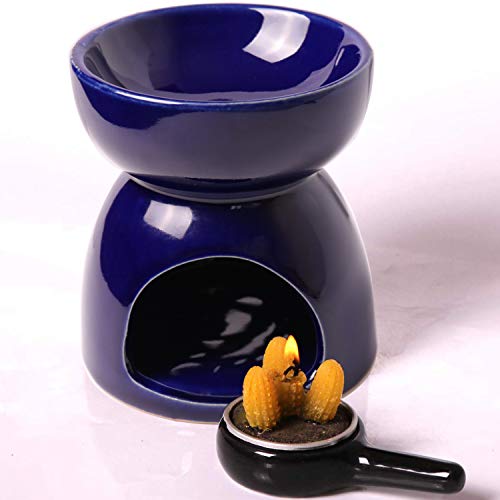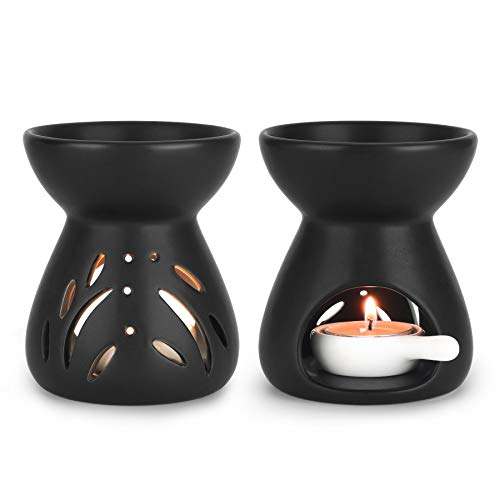Introduction to Home Fragrance Products
Home fragrance products have become an integral part of households around the globe, celebrated not only for their olfactory appeal but also for the ambiance they help create. Among the most common types of these products are scented candles, air fresheners, diffusers, and essential oils. Each of these variants offers a unique method of dispersing fragrances throughout a home, catering to diverse preferences and needs.
Scented candles, for instance, are beloved for their dual functionality; they provide both aroma and a visually soothing flame. Air fresheners, available in various forms such as sprays, gels, and plug-ins, are valued for their convenience and immediate effects. Diffusers, particularly those using essential oils, have gained popularity for their ability to deliver consistent, long-lasting scents without the need for an open flame. Essential oils themselves, often used in diffusers or added to humidifiers, are prized for their natural origins and multifaceted benefits.
The primary purpose of these home fragrance products is to enhance the sensory environment of living spaces. By introducing pleasant smells, they can elevate mood, mask unwanted odors, and even impart a sense of cleanliness and freshness. This widespread usage attests to their significant role in daily life, with many individuals selecting specific aromas to match seasonal changes, personal preferences, or to evoke particular feelings and memories.
As the demand for home fragrances continues to grow, so does the variety of products available on the market, each promising to create a desirable atmosphere. However, this raises the question of whether these products genuinely eliminate odors or merely mask them—a topic of considerable interest and the central focus of our discussion today.
How Home Fragrance Products Work
Understanding the mechanics behind home fragrance products requires delving into the intricate world of scent molecules and human olfactory receptors. When you use a home fragrance product, such as a scented candle, essential oil diffuser, or air freshener, it disperses scent molecules into the air. These scent molecules are then inhaled and make contact with our olfactory receptors located in the nasal cavity.
Olfactory receptors are specialized cells that detect odorants, the chemical compounds that make up scents. Once these receptors bind with specific scent molecules, they send electrical signals to the olfactory bulb in the brain. This is how we perceive different aromas. The uniqueness of each fragrance is determined by the combination of various scent molecules and how they interact with the olfactory receptors.
Home fragrance products can serve distinct functions: masking odors or eliminating them. Temporary masking occurs when the scent molecules from the fragrance product are stronger than the unwanted odors present in the environment. This means the unpleasant smells are still there, but our olfactory system picks up the more dominant, pleasant fragrance. In contrast, odor elimination involves chemical reactions that neutralize unwanted odors. Some home fragrance products contain specific ingredients designed to break down the molecules responsible for bad smells, thereby removing the odor rather than just covering it up.
For example, certain air fresheners and odor neutralizers use substances like activated charcoal or baking soda, which chemically react with odor molecules to neutralize them. By understanding these differences, consumers can make informed decisions about which type of product suits their needs, whether they require a temporary fix or a more permanent solution for maintaining a fresh-smelling living space.
Types of Home Fragrance Products
Home fragrance products come in various forms, each offering unique advantages and potential drawbacks. Understanding these can help homeowners make informed decisions based on their needs and preferences. Here, we will discuss five primary types of home fragrance products: scented candles, aerosol air fresheners, plug-in diffusers, reed diffusers, and essential oil diffusers.
Scented Candles
Scented candles are a popular choice for adding a pleasant aroma to any space. They are available in a myriad of fragrances, from floral to woody scents, and can also create a cozy and warm ambiance. The key advantages of scented candles include their aesthetic appeal and the ability to control the intensity of the fragrance by choosing different sizes and burn durations. However, they require supervision while burning to prevent fire hazards and might not be the best option for long-lasting fragrance.
Aerosol Air Fresheners
Aerosol air fresheners are convenient and effective for quickly dispersing fragrance throughout a room. These products come in various scents and are designed to be used on-demand to neutralize unpleasant odors. The primary benefits include ease of use and immediate results. However, they often contain chemicals that may be unsuitable for individuals with respiratory issues or those seeking a more natural approach to home fragrancing.
Plug-In Diffusers
Plug-in diffusers offer a continuous release of fragrance, making them a popular choice for maintaining a consistent scent in a home. They are straightforward to use and can last for several weeks before a refill is required. The major advantage is the sustained fragrance release; however, they do rely on electricity and some products might emit artificial or overly strong scents that can become overwhelming over time.
Reed Diffusers
Reed diffusers are a stylish and low-maintenance option for home fragrance. They work by absorbing scented liquid through reeds and gradually releasing the aroma into the air. One of the key benefits is their ability to provide a subtle and continuous fragrance without the need for electricity or flame. On the downside, the intensity of the scent might not be as powerful as other methods, and they might require periodic flipping of the reeds for even fragrance distribution.
Essential Oil Diffusers
Essential oil diffusers use natural oils and water to disperse fragrant mist into the air. These devices are embraced for their therapeutic benefits as well as their ability to purify the air. They come in various designs, including ultrasonic, nebulizing, and heat diffusers. The pros include the potential health benefits from essential oils and the relatively safe method of diffusion. However, they require regular cleaning and a steady supply of essential oils, which can be a recurring expense.
In conclusion, choosing the right home fragrance product depends on individual preferences, including desired scent strength, maintenance level, and any health considerations. Each type comes with its own set of advantages and limitations, so a thoughtful selection can enhance both the ambiance and comfort of your home.
Masking vs. Eliminating Odors
The distinction between masking odors and eliminating them is a crucial consideration when selecting home fragrance products. Masking odors involves using scents or fragrances that cover up unpleasant smells without addressing their root cause. On the other hand, eliminating odors entails neutralizing or removing the actual source of the odor, resulting in a more enduring solution.
Products that mask odors typically work by overwhelming the senses with a stronger, more pleasant scent. This approach temporarily blocks out the offensive odor but does not eradicate its source. Common examples include air fresheners, scented candles, and room sprays. While these products can make a space smell more appealing, their effectiveness is often limited to the duration of their fragrance.
Conversely, products designed to eliminate odors contain ingredients that neutralize the molecules responsible for unpleasant smells. These formulations often include chemicals like activated charcoal, baking soda, or enzymatic agents that break down odor-causing compounds. For instance, odor eliminators like activated charcoal bags absorb and trap odors from the air. Enzyme-based cleaners are particularly effective at breaking down organic matter, making them popular for eliminating pet odors and food spills.
Moreover, some modern innovations combine both masking and eliminating properties. For example, air purifiers equipped with HEPA filters and activated charcoal not only disperse a subtle scent but also capture airborne particles and odor molecules, offering a dual approach to keeping spaces fresh. Similarly, odor-eliminating sprays often pair neutralizing agents with a light fragrance, ensuring immediate relief from unwanted smells while working to address the underlying sources.
In selecting between masking and eliminating odor products, one should consider the specific needs and persistence of the odor in question. Temporary issues may be adequately addressed by masking solutions, whereas persistent or strong odors likely require products with eliminating capabilities for a lasting resolution.
Popular Ingredients and Their Functions
Home fragrance products often contain a variety of ingredients, each serving a specific function, either to mask unpleasant odors or to eliminate them completely. Understanding the role of these ingredients can help consumers choose the most effective solutions for their needs.
One of the most common ingredients in home fragrance products is synthetic fragrances. These are designed primarily to mask odors rather than eliminate them. Synthetic fragrances come in a wide array of scents, offering users numerous options to create a pleasant atmosphere in their homes. However, some individuals may experience allergic reactions or respiratory issues due to the chemicals used in these fragrances, making it important to test products in small amounts initially.
Conversely, ingredients such as baking soda and activated charcoal are effective at absorbing and eliminating odors. Baking soda, or sodium bicarbonate, is well-known for its ability to neutralize acidic odors, making it a popular choice in odor-absorbing products. It is non-toxic and safe to use around pets and children, providing a beneficial alternative to synthetic fragrances. Activated charcoal, similarly, has a highly porous structure that traps and absorbs odor-causing molecules, effectively removing them from the air. Its natural composition makes it an eco-friendly option for odor elimination.
Another ingredient commonly found in home fragrance products is essential oils. These natural extracts not only impart pleasant scents but also possess antimicrobial properties that can help purify the air. Popular essential oils include lavender, eucalyptus, and tea tree oil, all of which offer various therapeutic benefits. However, it is crucial to use essential oils safely, as they can be potent and may cause skin irritation or other adverse reactions if not properly diluted.
Lastly, some products incorporate zeolite minerals which act as molecular sieves to capture and neutralize odors. These naturally occurring minerals are effective at long-term odor control and are often used in air purifiers and deodorizers.
Each of these ingredients brings unique benefits to home fragrance products. While synthetic fragrances focus on masking odors with pleasing scents, natural options like baking soda, activated charcoal, and essential oils aim to eliminate the source of the odor, providing a comprehensive solution for maintaining a fresh and healthy living environment.
Effectiveness of Different Products
Assessing the effectiveness of home fragrance products requires a thorough examination of how well they perform in eliminating or masking various types of odors. Each odor type, whether it’s pet smells, cooking odors, or smoke, has unique characteristics, and different products may vary in their ability to address these specific challenges. Here, we delve into the efficiency of various home fragrance solutions across different scenarios, supported by empirical evidence where available.
Pet Smells
Pet odors are notably stubborn due to the presence of ammonia and other strong-smelling compounds. Products like enzymatic cleaners are designed to break down these compounds at a molecular level, offering more than just a surface solution. These cleaners are especially effective in eliminating strong pet odors, as evidenced by studies published in journals of veterinary science. Conversely, air fresheners, such as sprays and plug-ins, often only mask the scent temporarily, without providing long-lasting relief.
Cooking Odors
Cooking can leave lingering smells, especially from potent ingredients like garlic or fish. Activated charcoal and baking soda-based products are often recommended for their odor-neutralizing capabilities. They work by adsorbing molecules responsible for the offensive smells, effectively reducing their presence in the air. A study published in the Journal of Food Engineering highlighted the efficacy of activated charcoal in absorbing volatile compounds. On the other hand, scented candles and aromatic diffusers might provide an immediate improvement in air quality by introducing pleasant scents, although they can be less effective in wholly eliminating strong cooking fumes.
Smoke
Smoke odors, whether from tobacco or household fires, pose a considerable challenge due to the tiny particles that cling to fabrics and surfaces. Ozone generators and air purifiers equipped with HEPA filters have been proven to reduce smoke smell significantly by filtering out minute smoke particles. A comprehensive review in the Indoor Air Journal underscored the effectiveness of these devices. Scented sprays and candles, while capable of temporarily masking smoke odors, do not address the underlying particles and may need to be used in conjunction with cleaning methods to achieve lasting results.
Overall, the selection of home fragrance products should be tailored to the specific type of odor. While some products excel at eliminating odors at their source, others are more suitable for providing immediate, albeit temporary, relief. Users should consider the nature and severity of the odor, alongside empirical evidence where available, to choose the most effective solution.
Health and Environmental Considerations
When evaluating the efficacy of home fragrance products, it is crucial to consider both health implications and environmental impacts. Traditional home fragrance products, such as sprays, candles, and plug-in devices, often contain a myriad of chemicals designed to neutralize or mask unpleasant odors. While these products may create a more pleasing indoor environment, their chemical components can pose potential health risks. Chief among these concerns are indoor air quality and respiratory issues, particularly for individuals with sensitivities or allergies.
Many synthetic fragrance compounds, including phthalates and volatile organic compounds (VOCs), have been linked to adverse health effects. Phthalates, for example, are used to prolong the scent's longevity but are known to disrupt endocrine function. VOCs, found in aerosols and some candles, can contribute to indoor air pollution, exacerbating respiratory conditions like asthma and bronchitis. The presence of allergens in these products can further complicate issues for those who are susceptible, causing symptoms such as headaches, skin irritation, and congestion.
The environmental footprint of home fragrance products is another critical consideration. Many conventional products are packaged in single-use plastics and contain non-biodegradable chemicals that contribute to environmental degradation. Aerosol cans, in particular, can release harmful propellants into the atmosphere, contributing to pollution and even affecting climate change.
Fortunately, eco-conscious consumers have alternative options. Natural home fragrance products, such as essential oil diffusers, soy or beeswax candles, and herbal sachets, offer a more sustainable approach. Essential oils, derived from plant extracts, can provide a pleasant scent without the synthetic chemicals found in many commercial products. Soy and beeswax candles tend to burn cleaner than their paraffin counterparts, releasing fewer pollutants. Herbal sachets made from dried flowers and spices can freshen up small spaces without the need for artificial additives.
In summary, when choosing home fragrance products, it is wise to balance the immediate benefits of odor elimination with potential health and environmental consequences. Opting for natural or eco-friendly alternatives can offer a safer, more sustainable method of maintaining a pleasant home atmosphere.
Concluding Thoughts and Recommendations
The investigation into whether home fragrance products actually eliminate odors or merely mask them has brought forth several key insights. First, it's important to distinguish between different types of products. Air fresheners and scented candles often provide a temporary solution by masking unpleasant smells with more appealing scents. Conversely, products like odor-neutralizing sprays or those containing active agents such as baking soda work to absorb or neutralize odors at the molecular level, thus offering a more lasting solution.
When selecting the right home fragrance product, it is essential to understand your specific needs. For scenarios where immediate relief from unwanted smells is required, products designed to mask odors might be more beneficial. These can be exceptionally useful in high-traffic areas or during gatherings. However, for those seeking a more permanent solution, investing in odor-neutralizing products can be a wiser choice. Such products are particularly effective in spaces prone to persistent odors like kitchens, bathrooms, and pet areas.
Best practices for using home fragrance products should prioritize both efficacy and safety. Always follow the manufacturer's guidelines for usage and ensure proper ventilation when using these products to avoid any potential respiratory discomfort. Consider combining methods: using air purifiers with HEPA filters, maintaining cleanliness, and ensuring fresh air circulation can further augment the effectiveness of any chosen product. This multifaceted approach helps maintain a pleasant environment while tackling the root cause of odors.
In summary, while home fragrance products can either mask or eliminate odors, making an informed choice based on specific needs will lead to more satisfactory outcomes. Thoughtful and appropriate use, together with general home cleanliness, can ensure both a pleasing and safe home environment.







